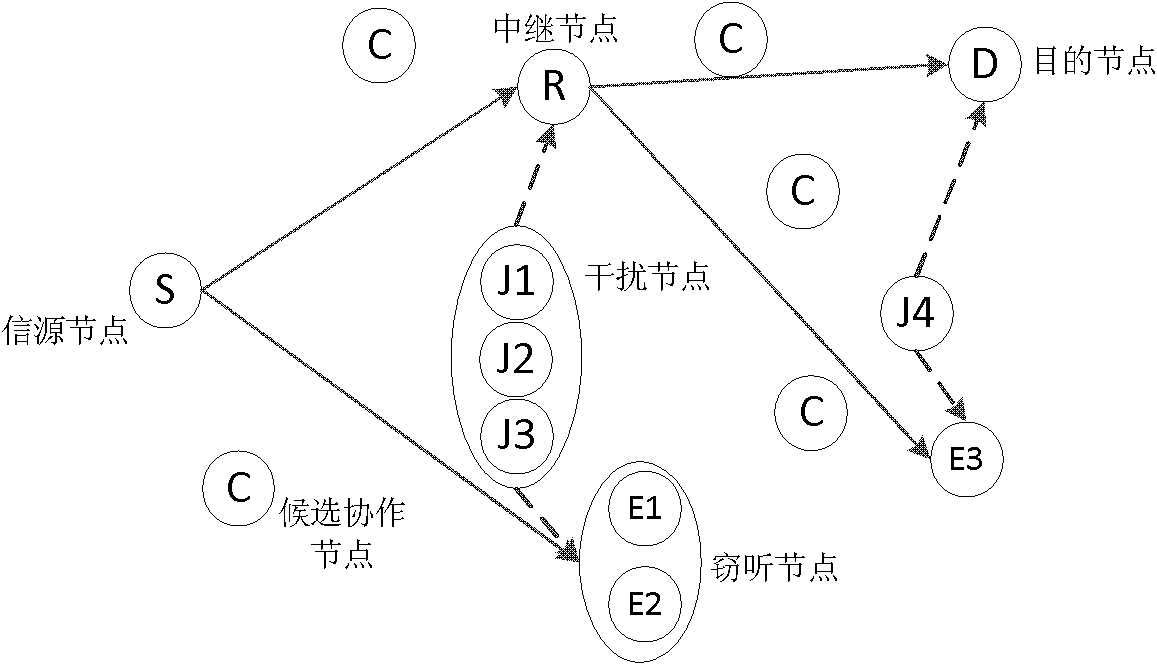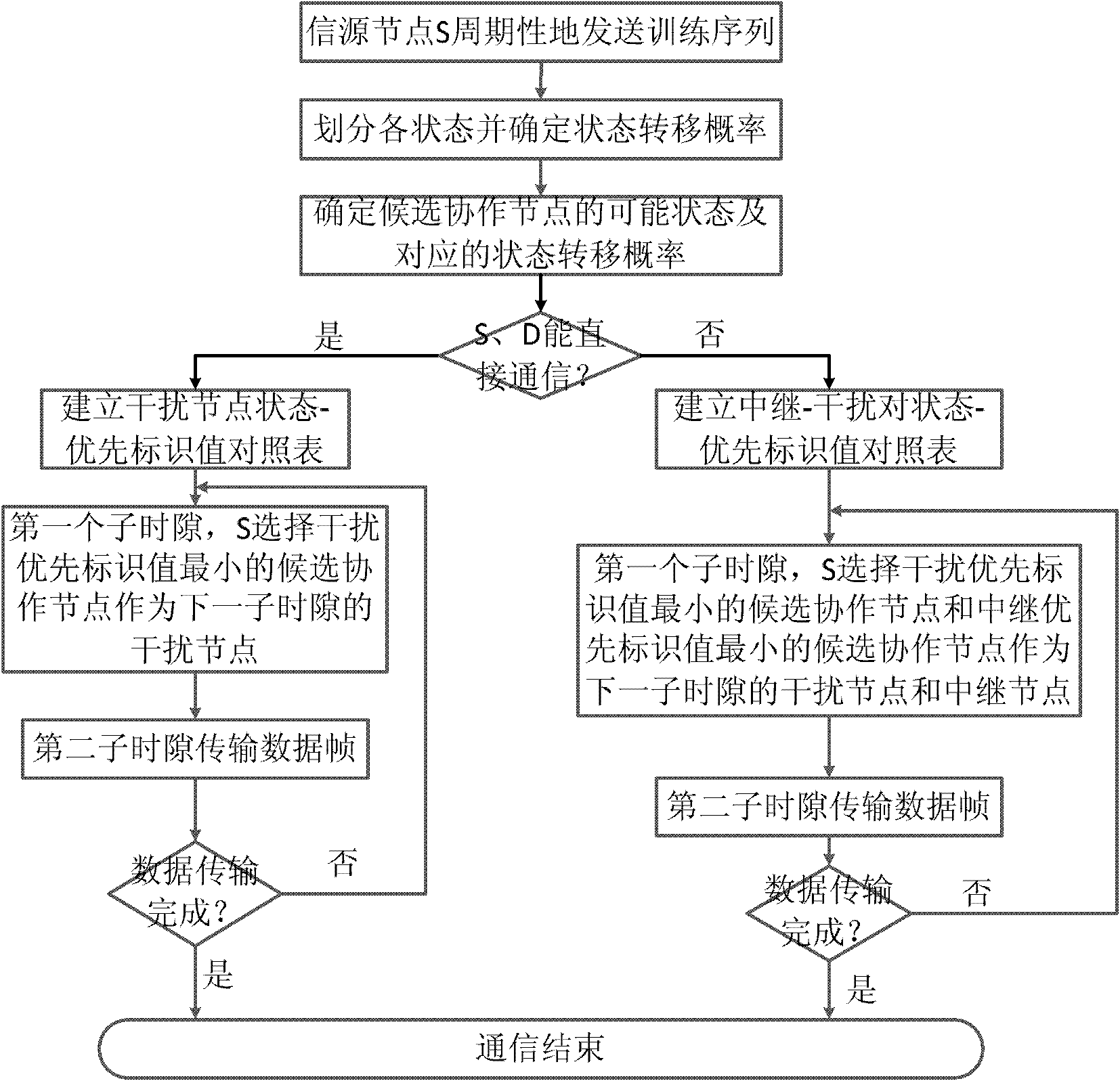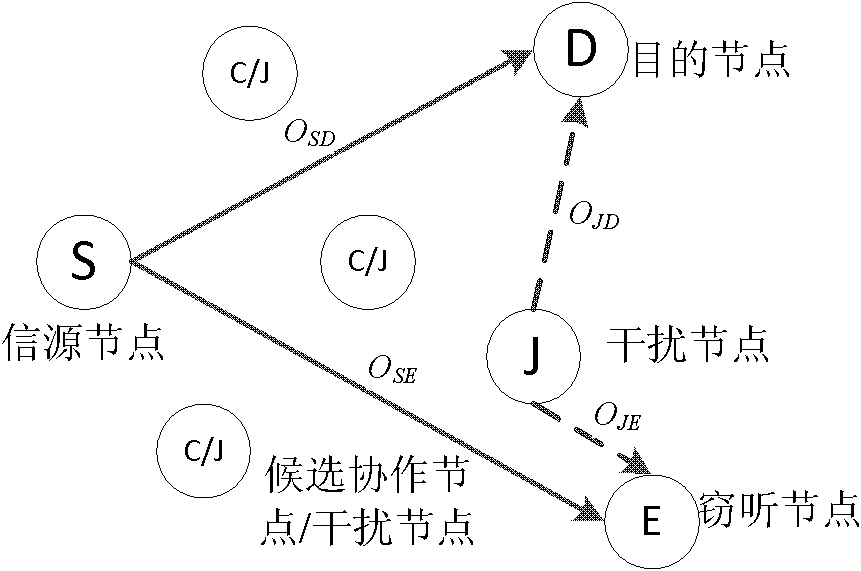Method for selecting optimal distributed type interference source in mobile collaborative network
A mobile collaboration, optimal technology, applied in the direction of communication interference, advanced technology, security devices, etc., can solve the problems of simple form, single target of eavesdropping interference method, etc.
- Summary
- Abstract
- Description
- Claims
- Application Information
AI Technical Summary
Problems solved by technology
Method used
Image
Examples
Embodiment 1
[0071] The scene of Embodiment 1 of the present invention is as follows image 3 As shown, there are one source node S, one destination node D and one eavesdropping node E in the network, and several candidate coordinating nodes C, and each candidate coordinating node only considers the case of interfering node J (shown as C / J in the figure) . Each node is equipped with a single antenna, and the channels between nodes are all Rayleigh fading channels with equal bandwidth and independent of each other. The transmission power of the source node is P S , the transmit power of each interfering node is P J . The scenario of Embodiment 1 can be applied to a certain hop or several hops of data transmission in a multi-hop network. In particular, when the main channel (SD channel) environment is inferior to the wiretapping channel (SE channel), the traditional method cannot realize S to D The safe communication between nodes can only rely on the introduction of relay nodes to forwar...
Embodiment 2
[0173] The scene of embodiment 2 of the present invention is as follows Figure 4 As shown, there are one source node S, one destination node D and one eavesdropping node E in the network, several candidate coordinating nodes C, and candidate coordinating nodes C have two cooperating modes at the same time: relay mode (that is, as a relay node R Cooperate) and interference mode (ie cooperate as interfering node J). Each node is equipped with a single antenna, and the channels between nodes are all Rayleigh fading channels with equal bandwidth and independent of each other. The sending power of the source node is P S , the transmit power of each coordinating node working in the interference mode is P J , the transmission power when working in relay mode is P R .
[0174] Compared with Embodiment 1, the situation considered in the scenario of Embodiment 2 is: when the source node S and the destination node D cannot communicate directly due to obstacles or the channel is in a...
PUM
 Login to View More
Login to View More Abstract
Description
Claims
Application Information
 Login to View More
Login to View More - R&D
- Intellectual Property
- Life Sciences
- Materials
- Tech Scout
- Unparalleled Data Quality
- Higher Quality Content
- 60% Fewer Hallucinations
Browse by: Latest US Patents, China's latest patents, Technical Efficacy Thesaurus, Application Domain, Technology Topic, Popular Technical Reports.
© 2025 PatSnap. All rights reserved.Legal|Privacy policy|Modern Slavery Act Transparency Statement|Sitemap|About US| Contact US: help@patsnap.com



